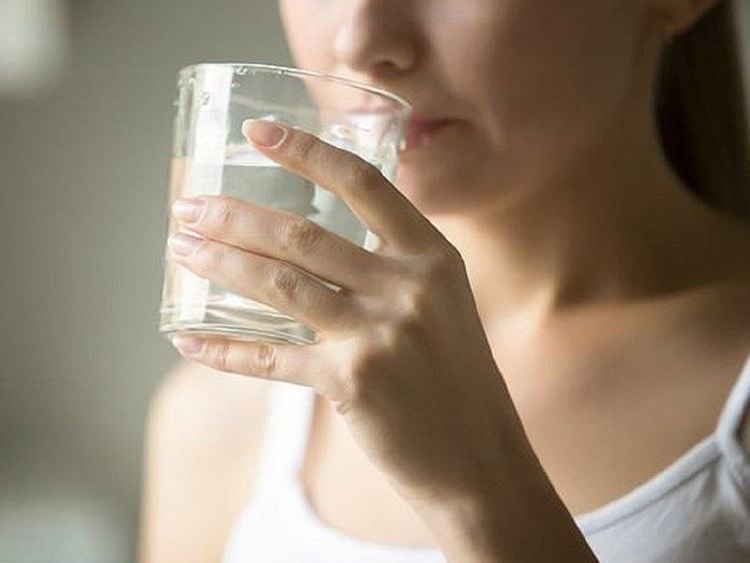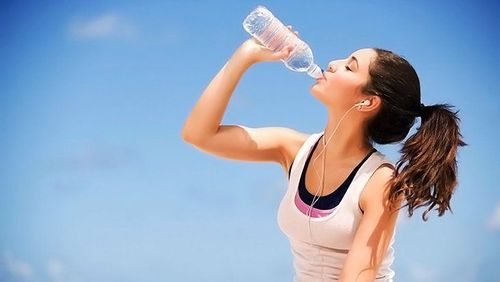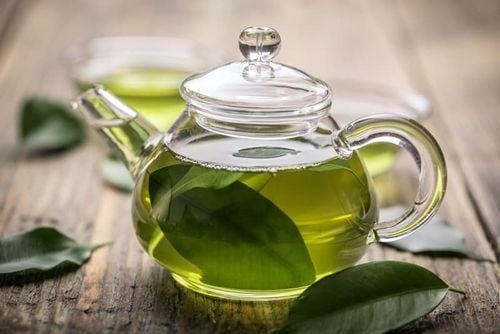Oxygenated water is a new functional water product with oxygen added during bottling. It is claimed to provide health benefits such as aiding exercise recovery, eliminating toxins, and improving alcohol metabolism. However, it does not contain any important nutrients.
1. What is Oxygenated Water?
Oxygenated water is water with oxygen added to it during the bottling or canning process. Along with alkaline and protein, oxygenated water or mineral water is one of the many functional glasses of water that are now widely available on the market.
Oxygenated water is low in calories, but lacks important nutrients needed to keep the body healthy. However, oxygenated water is generally quite safe to consume and has certain beneficial uses.
2. Potential Benefits of Oxygenated Water

While research on oxygenated water is limited, there are some suggestions that it may provide some potential benefits, including:
2.1. May improve lactate release
During sustained moderate to high-intensity exercise lasting longer than approximately 10 seconds, lactate is produced as a byproduct of energy metabolism.
As lactate accumulates, there is a corresponding increase in muscle acidity. This maycan cause muscle fatigue if left unchecked. Therefore, clearing lactate and muscle acid become important during exercise.
A study conducted on 25 runners found that post-exercise lactate clearance was improved in those who drank oxygenated water during exercise. This suggests that no other improvements in exercise performance were noted.
However, this is the only study to investigate this association. Therefore, in the future, more research is needed to confirm this relationship. However, if you are a high-level endurance athlete, you should try adding oxygenated water during your workouts to experience its results.
2.2. May Enhance Alcohol Metabolism
Another proposed benefit of drinking oxygenated water is that it may enhance alcohol metabolism. This is because one of the side effects of alcohol metabolism may be a lack of oxygen in the liver. When you drink alcohol, it is absorbed through the stomach and small intestine. The alcohol is then transported to nearby areas where it is metabolized through a series of reactions that require large amounts of oxygen.
One study conducted on 15 healthy men looked at alcohol metabolism. The results showed that dissolved oxygen in drinks can accelerate the reduction of blood alcohol concentration after consuming large amounts of alcohol. Therefore, more research is still needed to establish exactly how oxygenated water can help with alcohol metabolism.
2.3. May Help the Body Meet Hydration Needs
Another potential benefit of oxygenated water is that it can help the body meet its daily hydration needs. A common rule of thumb when it comes to drinking water is to drink at least 8 glasses (that is, about 2 liters) of water per day. At the same time, when considering the body, it is found that it is about 60% water. Therefore, hydration is extremely important for other processes to function such as temperature regulation, maintaining blood pressure, and proper brain function.
Oxygenated water is considered part of daily fluids to provide water for the body as well as meet the body's hydration needs.
3. Some disadvantages of oxygenated water
Although oxygenated water is generally safe for everyone to use. However, it also has some disadvantages that need to be noted for safe and effective use.
3.1. Oxygenated water is similar to hydrogen peroxide
Oxygenated water is similar to hydrogen peroxide, which is a common disinfectant. Both liquids are forms of oxygenated water, although in hydrogen peroxide there is a bond between two oxygen molecules. On the other hand, oxygenated water is simply oxygen dissolved in water, it is quite safe to use for drinking.
Hydrogen peroxide, whether it is a food or medical substance, is not safe to drink. Even small amounts can cause serious side effects such as nausea, vomiting, stomach pain, sore throat and internal bleeding.
Therefore, it is important to only drink oxygenated water intended for human consumption which is usually found in the beverage section of shops or supermarkets.
3.2. Oxygenated water must be consumed promptly
Oxygenated water, like sparkling water, rapidly loses carbonation over time. At the same time, oxygenated water can also rapidly lose oxygen after opening. For this reason, most manufacturers recommend that oxygenated water be consumed within 30 minutes of opening to maximize the amount of oxygen delivered to the body. Furthermore, most oxygenated water is packaged in cans, making rapid consumption especially important, as this type of packaging cannot be resealed once opened.

3.3. Lack of data on the use of oxygenated water
Although oxygenated water is widely discussed by nutritionists and sports professionals, rigorous research supporting its purported benefits remains limited. Furthermore, claims that this beverage improves skin and hair quality lack scientific evidence.
Until definitive research is available, it remains unclear whether oxygenated water offers any health advantages beyond those of regular water.
4. Use oxygenated water
Oxygenated water is frequently used as a post-workout beverage, although it can be consumed at any time. Various types of oxygenated water are available, distinguished by their added ingredients, such as caffeine, electrolytes, or hemp extract (also known as cannabidiol or CBD).
Caffeinated varieties can serve as a pre-workout drink, as caffeine has been shown to enhance exercise performance. However, because caffeine can interfere with sleep for some individuals, it should not be consumed close to bedtime. Electrolytes are added to some oxygenated waters to help promote hydration during moderate- to high-intensity exercise.
Preliminary research suggests that cannabidiol (CBD) may reduce chronic pain and anxiety at doses as low as 15 mg per serving. However, most oxygenated waters contain 10 mg or less. Oxygenated water can be consumed before or after exercise, or as a regular beverage throughout the day in place of regular water.

5. Comparing functional waters
It is difficult to compare oxygenated water to other functional waters. Their ingredients are different. Common functional waters include alkaline water, caffeinated water, antioxidant water, protein water, and chlorophyll water. Except for protein water, all of these have minimal data to support their effectiveness.
Functional water, including oxygenated water. Therefore, it can help the body meet its hydration needs. However, when using it, it is necessary to read the ingredients on the nutrition label carefully. The difference in functional water is that the bubbles in fizzy water come from dissolved carbon dioxide, while the bubbles in oxygenated water come from dissolved oxygen. This results in a similar feeling when used, although oxygenated water tends to be less fizzy.
In summary, oxygenated water is a popular beverage that has oxygen added during processing. It can improve lactate clearance during exercise and increase metabolism. However, research on this connection is still limited. Furthermore, the health claims of oxygenated water are still a question that needs to be answered with specific evidence. Oxygenated water can be considered part of a nutritional diet, although it does not provide any specific health benefits other than hydration.
Reference: healthline.com
To arrange an appointment, please call HOTLINE or make your reservation directly HERE. You may also download the MyVinmec app to schedule appointments faster and manage your reservations more conveniently.








